Who among us hasn't stood somewhere, and watched a boat go by, while thinking to ourselves, Wow! That would make a great picture. Think of the many opportunities available to you as a photographer, no matter what your location is. It could be a tugboat pushing barges down a mighty river, a cruise ship leaving port, a single fisherman in a rowboat on a lake, or perhaps a kayak shooting the rapids in a canyon stream. The possibilities are almost endless.
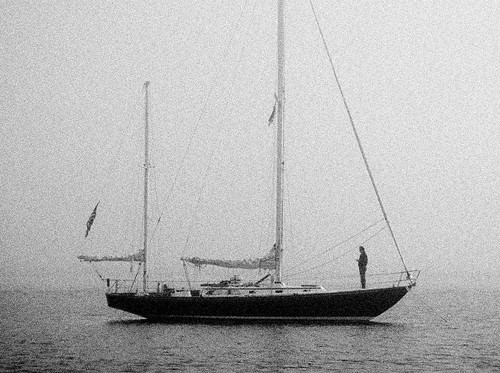
Sailboat In Fog by Kent DuFault, on Flickr
Boat photography is fun and surprising. While on a sailing trip, we awoke one morning to dense fog and an unexpected neighbor. Due to lack of color in the scene. We chose to image in black and white. In post, we added film grain to give the image an even more lonely feeling.
Let's talk about what you need to know in order to get great pictures of boats, ships, and all things that float.
Location
You have four choices of location when you're going to photograph boats and ships.
- You're on the boat itself
- You're on another boat
- You're on shore
- You're in the air looking down
Each of these possibilities presents opportunities and challenges.
Let's talk about each scenario one at a time.
You're on The Boat You Are Photographing
How you prepare yourself for this scenario will depend a lot on the boat itself. Is it a cruise ship, or, is it a white water raft? So, we're going to break down our recommendations by the size of the boat.
But one recommendation is true no matter what the size of the boat, you're going to want to protect your equipment.

Why? You ask. Because a boat moves, and it often does so in an unpredictable and erratic manner: hence the term “getting your sea legs.” The number one rule when photographing from a boat, (or from another boat), is to keep that camera secured via a strap or a sling. The number two rule is if you're not using a piece of equipment stow it in a waterproof, or water resistant, place and keep it covered. Nothing can ruin a day of boat photography faster than a large unexpected wave crashing over the bow of your boat and drenching your open camera bag with salt water. Unless you're on a cruise ship almost any boat is capable of giving you a good drenching. We once went out to take photographs from a 38 foot luxurious fishing boat. It started out as a beautiful day. But before we could return to port, a sudden storm blew in. Eight foot seas sent waves crashing over the bow and gunnels of the boat. Everything was drenched. You never no what you will encounter, so be prepared.

Deep Sea Fishing (10 of 156) by Emrys.Roberts, on Flickr
Space aboard boats can be tight. A wide angle lens will allow you room to capture the action!
Here are some guidelines-
Small craft and adventure boating, this would include river rafts, kayaks, jet skis, canoes, and boats 23 feet and under. You will want to waterproof your equipment. You can do this by purchasing a waterproof camera, a waterproof housing, or simply using airtight zip lock bags. But use some common sense. Don't pull out your unprotected (and expensive) DSLR while riding on the back of a jet ski unless it's in a waterproof housing and strapped to your body.
Mid-size craft includes fishing boats, sailboats, houseboats, trawlers, anything from 23 foot to 100 foot. In this category you can ditch the waterproof housing. But, you will still want to keep your gear in zip lock bags when not in use and be conscientious of conditions that might send spray into your boat.
Large craft, cruise ships, transport ferries, and anything 100 foot in length and above. In this category you're pretty safe from getting wet. But it never hurts to be prepared.
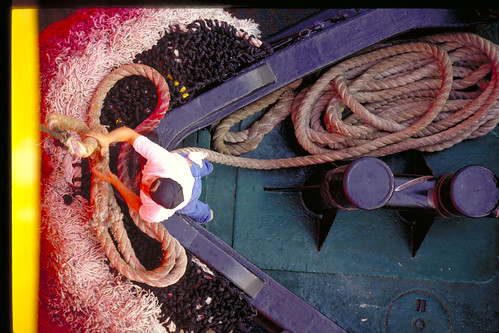
Tugboat Port Canaveral FL by Kent DuFault, on Flickr
This photograph was taken from a cruise ship preparing to leave port. We noticed the tugboats approaching to help pull the ship from dock. We moved to the bow and looked down capturing this crewman tying up to the ship. Keep your eyes open for unique stories when photographing boats.
When photographing from aboard, you will want to carry wide angle to moderate telephoto lenses. You can leave that super telephoto at home. Lenses with image stabilization would be a big help. In this scenario, an external flash might also come in handy. Look for images that tell a story: water glistening from a winch, a crewman climbing to the crows nest. Remember everything is moving so keep your shutter speed fast. We would recommend a shutter speed of at least 1/200th or faster.
You're on Another Boat

Schooner Florida1999 20×30 by Kent DuFault, on Flickr
We were hired to create some dramatic brochure photographs for the owner of this schooner. The photographs were taken from an open bow 23 foot chase boat. The maneuverability of the chase boat was important as the subject had limited maneuverability.
All the suggestions for being on the boat apply here. However, here are a few other considerations. You may want to bring a longer telephoto lens. Boats tend to keep some distance from each other so a telephoto lens can help pull that vessel into the frame. It also helps to be on a faster more maneuverable boat than your subject(s). Let's say that you're photographing a regatta for your yacht club. While you could be riding on one of the sailboats participating in the race, you will be locked into what you can see from that vantage point. Plus, you need to stay out of the way of what is happening with the crew. Now, imagine how much more you could capture, if you were on a motorized boat, with your own pilot, taking directions from you, zipping around the much slower moving sailboats, your opportunity for the award winning shot increases greatly.
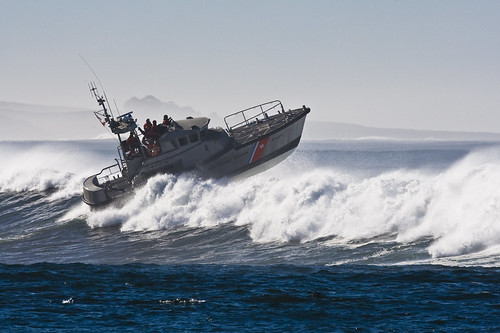
Coast Guard 47′ Motor Lifeboat in Morro Bay, CA 04 Dec 2007 by mikebaird, on Flickr
You're on Shore
Now, we're talking a completely different situation. Here you can probably leave your wide angle lens and flash at home. The lens of choice would most likely be a telephoto to super telephoto. In addition, you're unlikely to get wet unless it rains, or, there are waves crashing about. A tripod would be very handy. A pistol grip, or ball head, would work better than a traditional head because (once again) boats are moving. When working from shore try to find angles that tell a story and indicate scale. An example might be a nuclear submarine coming into port with a regatta of fishing boats around it.
You're in The Air Looking Down
This scenario could be something as simple as snapping a picture out the window of an airplane while on vacation. Or, it could be an important event that requires you to hire something that flies for shooting the photographs.
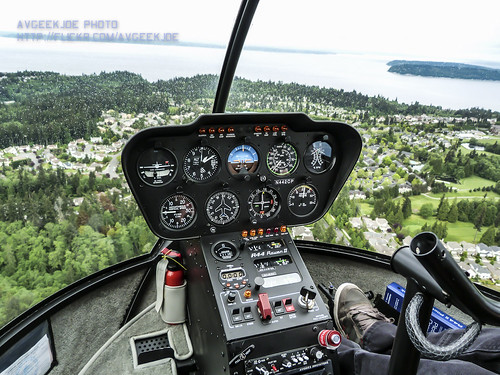
A Peek Into the Robinson R44 Raven II Cockpit… by AvgeekJoe, on Flickr
When photographing from a helicopter, or airplane, you will have limited space for movement. Get yourself organized while you're still on the ground.
When shooting from the air, you'll want to bring a variety of lenses. Remember to keep your shutter speed up as fast as possible. Depth of field shouldn't be an issue so you can go wide open with your aperture. The maneuverability of a helicopter makes it an excellent choice for doing aerial photography. If you are hiring an airplane, or a helicopter, ask them if they can remove a door or window so that you have an unobstructed view. If you're going with an airplane, try to find one that doesn't have struts under the wings as they will get in your way when trying to frame a photograph. If they're removing the door ask for a safety harness. Be sure to keep your gear secure, anything tumbles out, and it becomes a potential deadly missile. Always keep your camera strapped to you. A polarizing filter is often an effective tool to remove reflections when shooting from the air. But remember, time is money when it comes to aerial photography. Plan what you want ahead of time so that you're not fumbling around while you're in the air.
Final Thoughts on Angle, Exposure and Equipment
Boat photography really boils down to two types of images: mood and action. For action you're going to need longer lenses and plenty of shutter speed. When purchasing lenses make sure they have the image stabilizing function. A mood image gives you a bit more flexibility with the exception of one thing. You will want to shoot early, or late, in the day. This is when you will get the moody lighting that will make your image pop from the page. The three main causes of ruined boat images are camera shake, poor focusing, and underexposure. Keep your shutter speed fast, we recommend using the shutter priority function on your camera, then you can rest assured that it won't drop below your desired setting. Practice focusing on moving objects. Get used to the different focusing patterns available on your camera. Check your exposure histogram. When you're photographing at the water, remember, everything is bright. The sky is bright. The water is bright. A good number of boats themselves are bright white. This will lead to underexposure unless you increase your exposure by 1.5 to 2 stops.
In Conclusion
Go out and have some fun! Boat photography offers some unique challenges and when your prized photograph hangs on the wall, you will have a great sense of satisfaction!

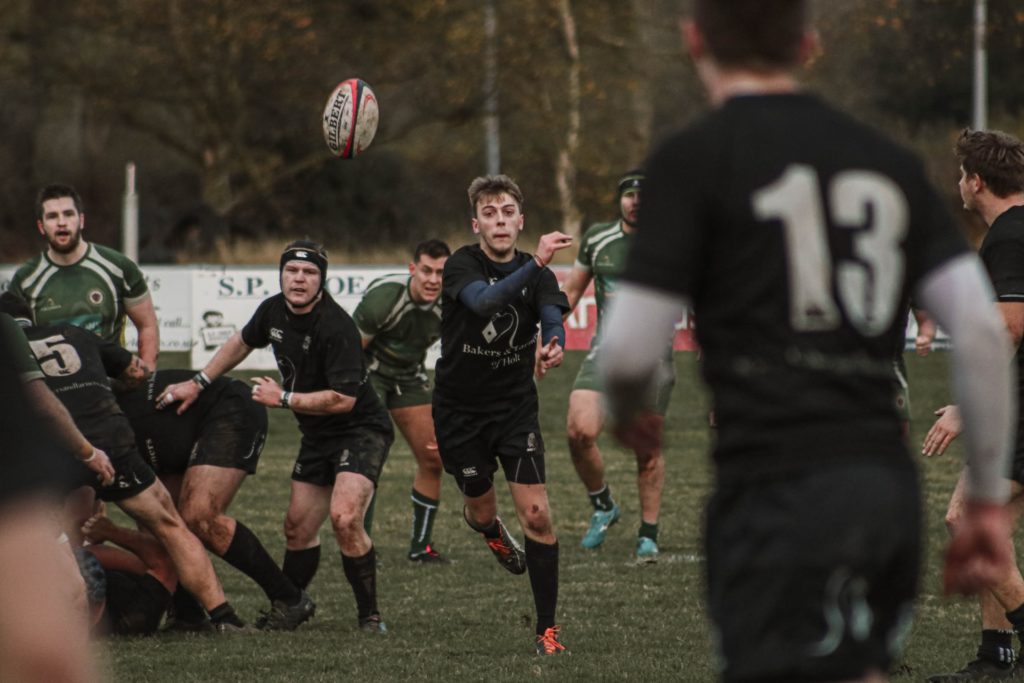
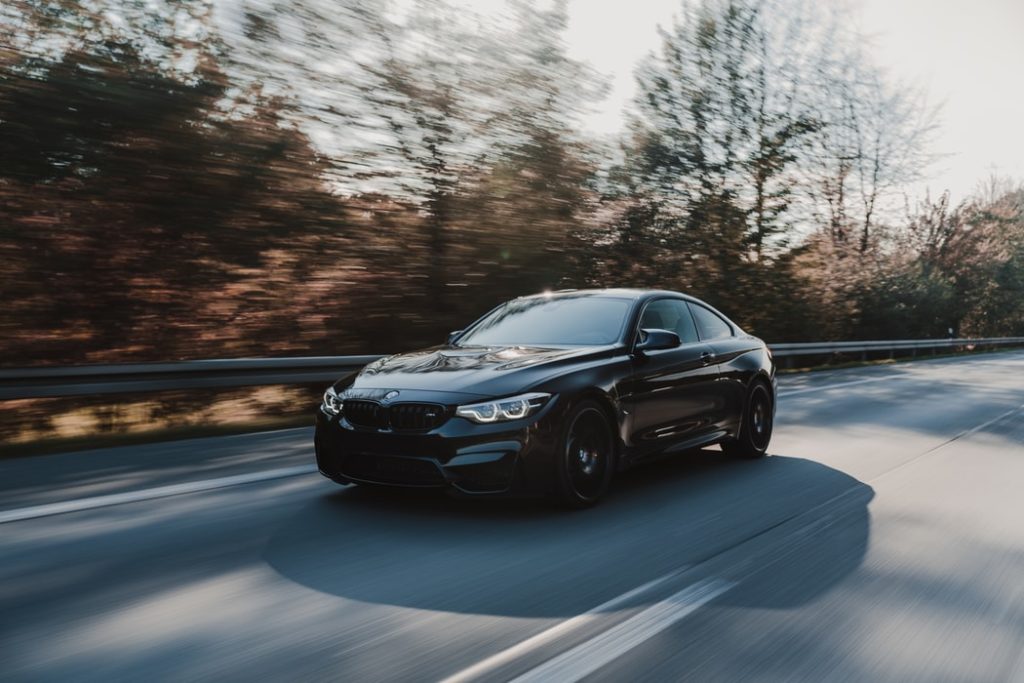
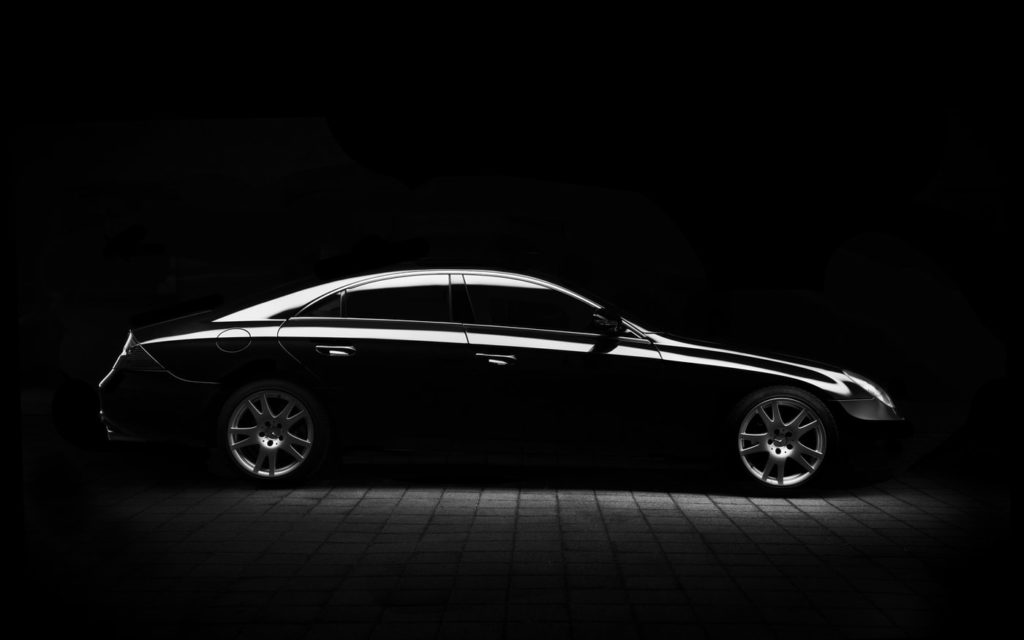
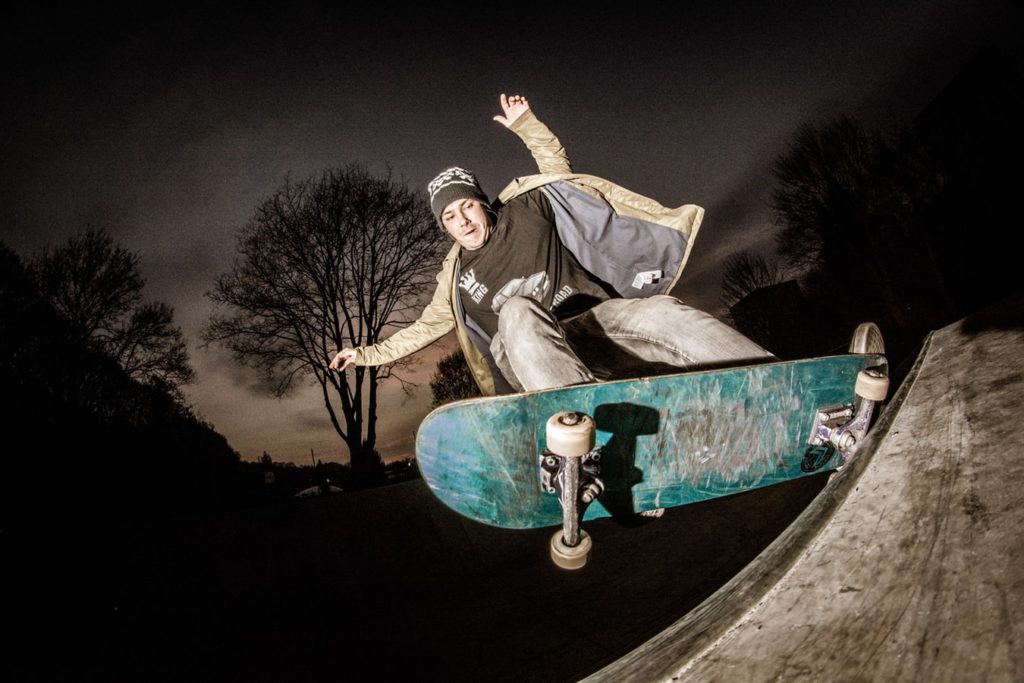
4 Comments
As a passionate boater and someone who is thinking of getting into photography i found this article great. I had the great opportunity to visit a ‘boat graveyard’ once. It was a beautiful day and i got some fantastic shots. It was quite a majestic place and to see so many vessels just rotting away on the shore during their final days was definitely a sight.
Thanks for a lovely read! I am an amateur with an entry-level Nikon (DSLR 3300), my first SLR. I have an assignment tomorrow at Kidderpore dock on the Ganges in Calcutta (Kolkata). Will try to use the tips and let you know.
Regards
Such a useful article! I am into boating for almost 25 years and never were interested in the photography before but your article amazed me. Thank you so much.
Know the vessel design and lines. Certain vessels look better from the stern quarter for example (older style workboats or workboat derived with deep sheerlines designed for hauling nets or dredges – catboats and dories for example). Others look better bow on (deep vee “Moppie” hulls that look terrible as they root in a following sea). Just advice from an old skipper and marine surveyor who photographs boats as well.